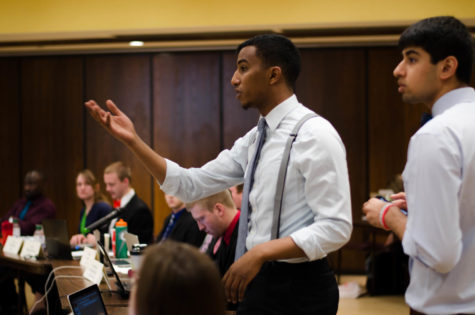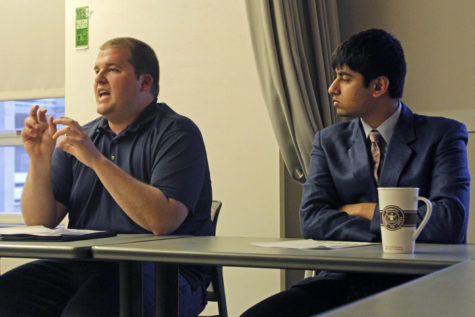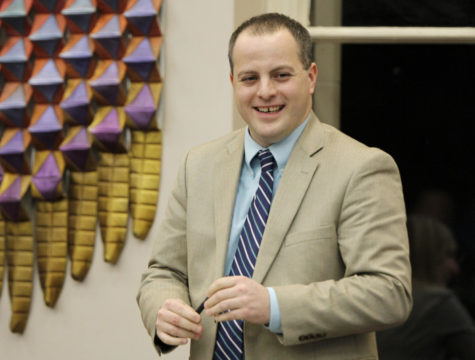Catt Hall committee discusses goals; will try to ‘open up doors’
July 21, 1998
Members of the Committee for Review of the Catt Controversy began to lay the structure for their final report, focusing on an academic perspective of the controversy.
Ten members of the 15-member committee met Friday to discuss focus for the committee and a format for the committee’s report.
The review committee, established by the Government of the Student Body, is charged with presenting a proposal to the GSB senate by the fourth regular senate meeting of the fall 1998 semester.
The report was tentatively structured to include a summary of scholarship on women’s suffrage, a report on how other schools have handled debates similar to the Catt controversy, a history of the naming process at ISU, a history of the conflict since 1995, critical analysis of some of Carrie Chapman Catt’s written rhetoric, a brief history of Catt and her achievements, and ideas on “where do we go from here.”
Lynn Wellnitz, committee member and secretary in the office of admissions, said it was important to approach the situation from an educational perspective.
“We are not going to reach a consensus or agree on whether Catt was racist or not,” Wellnitz said. “But we can educate people as to why there’s a problem.”
Judd Penny, committee member, suggested that the committee deal first with the first charge GSB assigned — to “review historical information about Carrie Chapman Catt in an attempt to find out to what extent, if any, her actions were racist, xenophobic and classist.”
Penny said the committee should focus on one charge at a time, and then move to examine the naming process from there. Several members disagreed, saying the committee should have a broader, more academic focus.
“I’m not interested in settling if she was racist,” said committee member Pam Thomas, director of the Margaret Sloss Women’s Center. “I’m interested in moving on.
“I think this committee’s charge, if anything, should be as a catalyst for healing,” she said.
Committee members said the academic slant of a summary report would help improve communication about the issue, although many doubted it would end the controversy.
“I don’t know that anything we do can bring closure,” said Jane Cox, committee member and professor of music.
“I don’t think that even after we make our decision people will stop talking about this,” said Elisa Strachan, committee member and junior in journalism and mass communication. “If we succeed, they will talk about it better.”
The committee’s duties, as specified by GSB, also include organizing public forums and preparing a proposal for “specific action items.”
Matt Ostanik, GSB resource person, reminded the committee that they needed to address each of these items.
Although some committee members say specific action objectives are premature at this point, they maintain that education is a main goal. Virginia Allen, committee member and professor of English, said at this point, education is the group’s main action.
“If we do nothing more than open up doors, and say, ‘This is a way to look at this in an academically responsible way,’ then our job is done,” Allen said.
“What I’m … not going to let happen is that the committee be sabotaged and nothing come out of it.”
Another action plan the committee discussed was to construct an informational kiosk in front of Catt Hall which explained the controversy over the naming process. The kiosk was also a recommendation of the Diversity Steering Committee.









